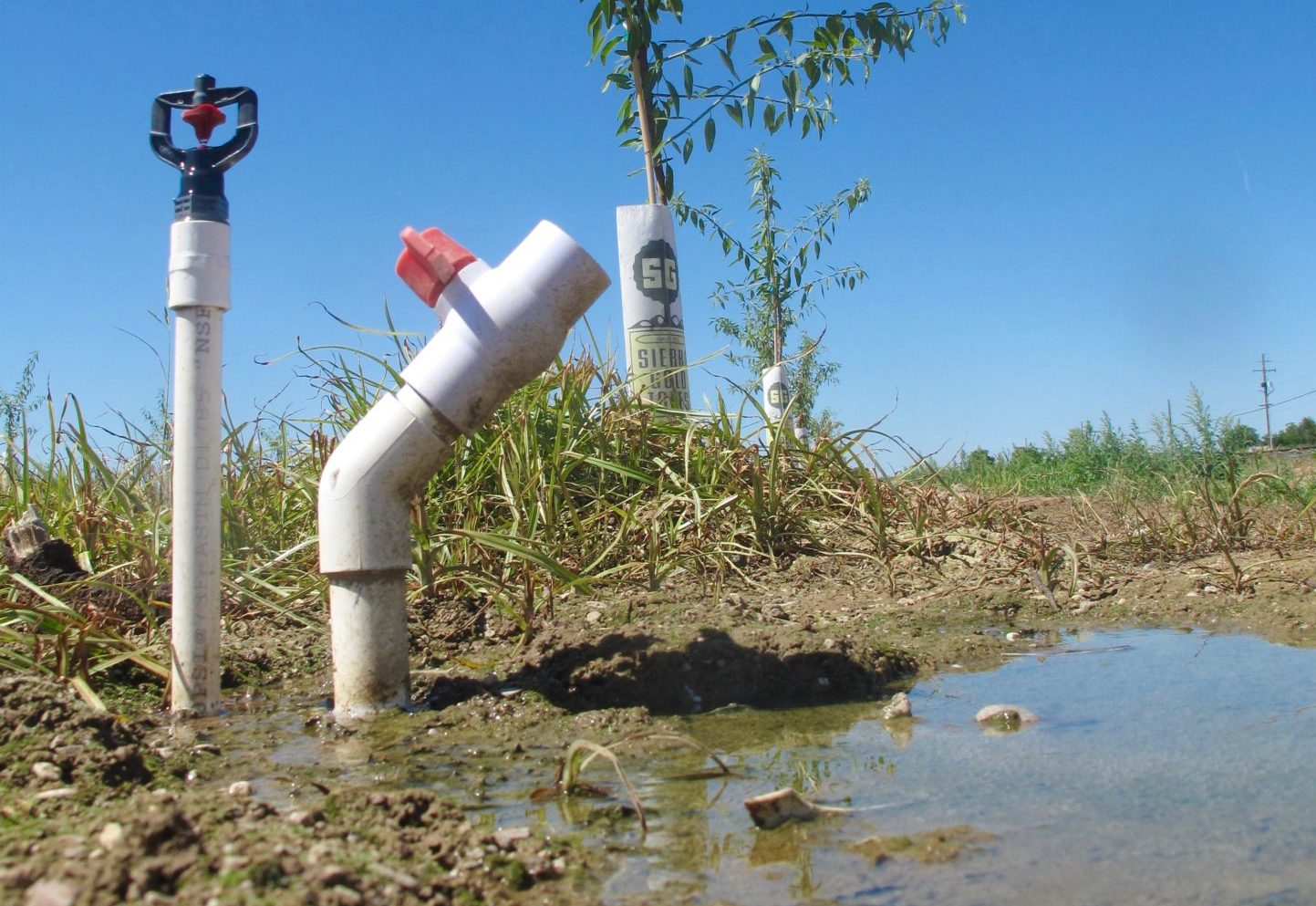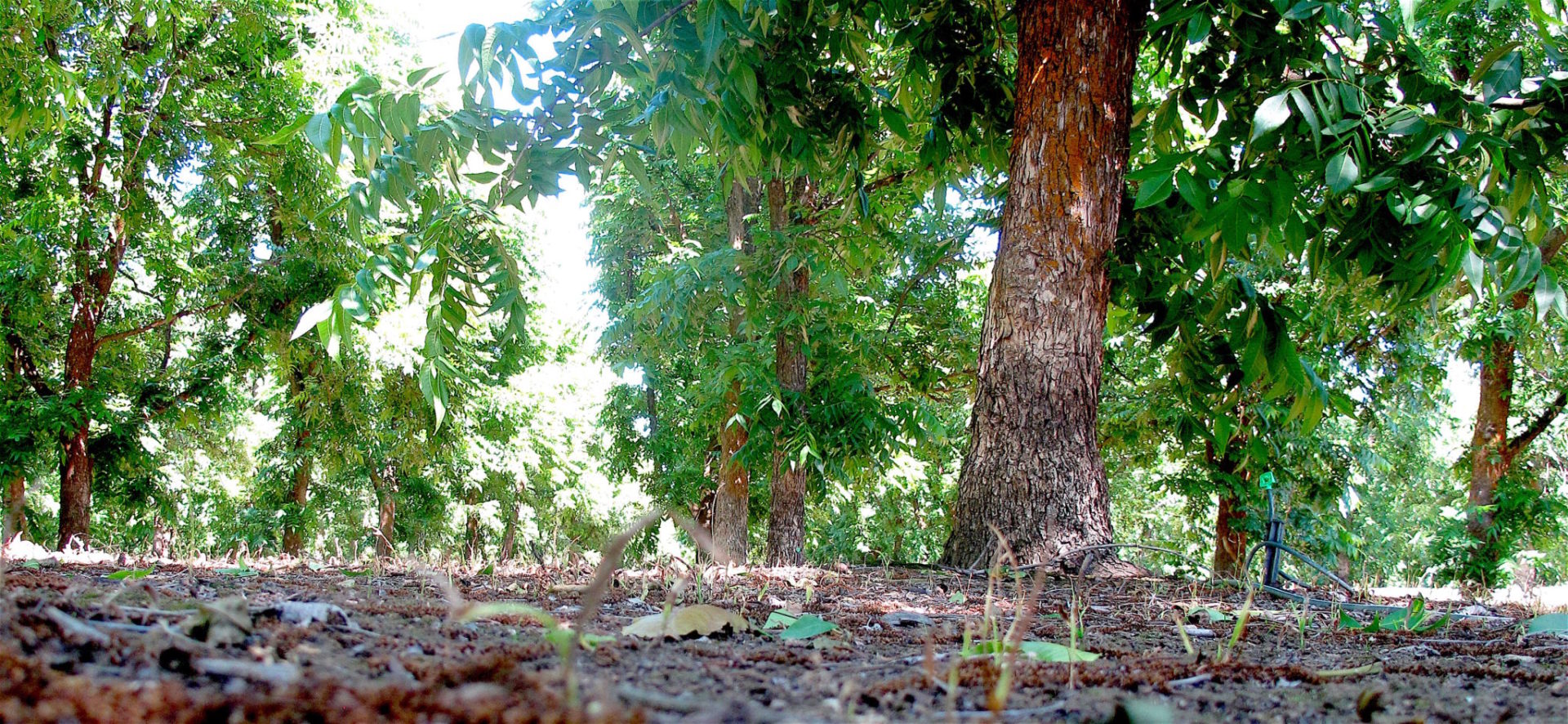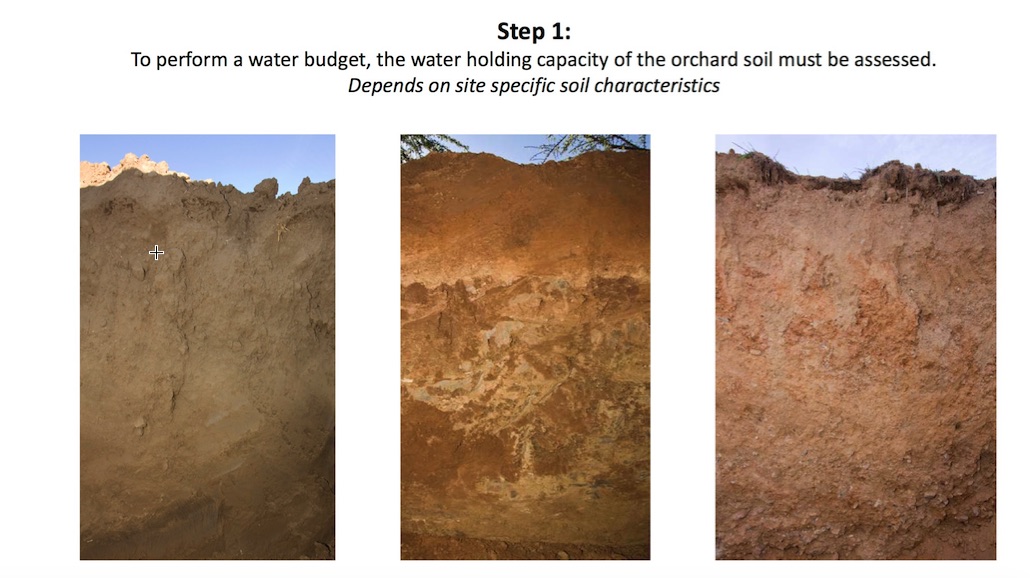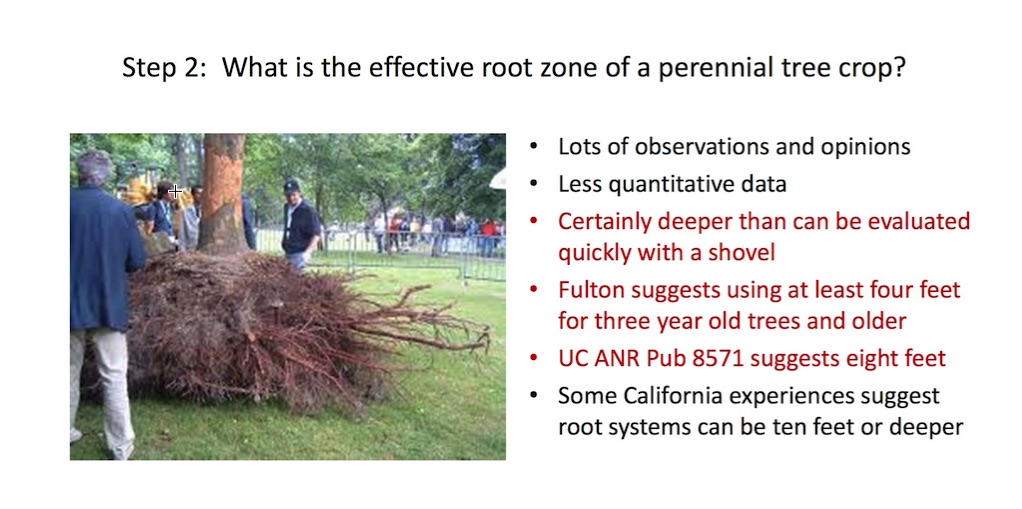
Western nut growers increasingly rely on weekly evapotranspiration rates to create a water budget for irrigating nut crops. Allan Fulton, UC Irrigation and Water Resources Advisor in Tehama, Glenn, Colusa and Shasta counties, said growers should also consider the soil when putting together ET-based irrigation budgets.
During the COVID shutdown, Fulton hosted an online virtual tutorial series to help agricultural water users learn how to apply weekly crop ET reports in guiding irrigation management decisions. The tutorial was held in response to a grower survey led by UCCE Farm Advisor Katherine Jarvis-Shean, Yolo, Solano and Sacramento counties, and Kit Alviz, program planning and evaluation analyst with the UC’s Agriculture and Natural Resources Division, that indicated growers would like more information to better use crop ET reports.
UC Cooperative Extension in the Sacramento Valley sends out weekly ET reports to growers, with each report giving evapotranspiration (ET) information, the measure of water leaving the orchard in the form of evaporation or transpiration through plants. The reports can help growers decide when to start irrigating and how much to apply, based on the idea of replacing the water that has been lost from the soil and plants by ET.
“It is part of conducting a water balance or a water budget, or essentially tracking or trying to estimate accurately the amount of water leaving the field and comparing it to the amount of water coming in, either as precipitation or irrigation,” Fulton said.
In the second tutorial, Fulton focused on putting weekly crop ET reports to work “from a soil perspective.”
Fulton said irrigating according to ET without considering the soil’s perspective runs the risk of over-irrigating. Soils store water from the rainy season for use during the growing season; depending on soil profile, water can be preserved in the soil for use in May, June, July, and even later.
That storage may or may not be a substantial part of the seasonal crop water demand, depending on crop root zones, soil characteristics, the weather for the year in question, amount of rainfall received. Understanding that availability through understanding the impact of soils can potentially impact power bills and water savings.
“Soils are also important from the standpoint that it controls how water infiltrates and percolates through the root zone, which, in turn, affects soil aeration as the roots are growing, and the tree and crop root health,” Fulton said. “So, if we were to just blindly budget our irrigations by matching ET 100 percent, based on irrigation system design, we would increase our chances quite a bit of over-irrigating by not considering the soil storage capacity and the root zone capacity of a crop.”
Creating a Water Budget
The concept of water budgeting is something Fulton believes is generally easy for growers to grasp as it is something they do day-to-day with their monetary budgets and finances.
“It’s an accounting process where we account for the crop water demand with our ET reports, and we compare it against, and balance it against, all the water supplied to the crop, that being irrigation water, as well as rainfall, and sometimes other sources of water like seepage if you happen to be in the proximity of a river, creek, or have some kind of shallow water table effect,” Fulton said. “We are looking for a balance, not a surplus or overdraft.”
He explains that a water budget is also a method of estimating or tracking the soil moisture depletion. The goal is to not over-supply the soil with water making it too wet and saturated, nor under-supplying it and having it be too dry for too much of the season.
“We’re trying to strike that balance for the soil moisture condition for the best chance of a sustainable crop from one year to the next,” Fulton added. “So, the question is, why use a water budget to estimate soil moisture depletion.”
He said for the grower who is just getting introduced to using science-based techniques for irrigation management, this is among the simpler techniques and a good place to begin trying to figure out how to integrate technology into irrigation management decisions.
“With our crop ET reports and with your knowledge of your irrigation system, and as you’ll learn about evaluating your soils, it is a relatively inexpensive on-farm management approach,” Fulton explained.
In addition, a water budget is a way to estimate and anticipate soil moisture conditions and irrigation needs, as a mechanism for planning ahead. A budget lends itself to tracking and reporting irrigation management practices.
“The reality is that those in agriculture are being asked more and more to report our practices for various regulatory reasons,” he added.
Another positive about a water budget is it offers a farm or orchard-wide picture of irrigation management, the “big picture-point of view,” and techniques for soil water balance across the variability of soils in any given piece of property.
“A water budget gives growers an estimate of the water and the soil water balance from a completely different perspective than provided by soil moisture sensors,” Fulton said.
He explained, with soil moisture sensors, the mechanism only tests the soil it touches.
“There is a very sharp contrast between the water budget approach and soil moisture monitoring as far as the scale of what we’re actually monitoring,” Fulton said.

Water Budget Step One
“To form a water budget and consider the soil conditions, we have to, as a first step, assess the water holding capacity of your orchard soil,” Fulton said. “This is a site-specific characteristic. Soils can come in many kinds, with many characteristics. What we’re trying to evaluate by assessing the water holding capacity of the soil is its ability to hold water in the unsaturated phase.”
Soils have two phases of water soil capacity.
“There’s the saturated phase, which is occurring during heavy rainstorms or during significant irrigations,” Fulton explained. “That is when the porosity of the soil is completely filled with water and there is no air in the soil. It’s the condition that we do not want to prolong, particularly when the trees are growing and transpiring. It’s one of the conditions that within 48 hours can do some pretty serious damage and harm to the root health of the trees that are leafed out and growing actively.”
Through gravitational pull, the water in the saturated phase should move the excess water within 24 to 48 hours. At that point, the soil will be in the field capacity state, which is the optimum combination of high water content and aeration, the pore space being 50 percent water and 50 percent air. From that point the soil moves into the wilting point, where no more water is available to plants.
There are several online and UCCE resources available to use as tools for understanding soil textures and water holding capacities and levels of those soils.

Water Budget Step 2
After assessing the water holding capacity of the soil, Fulton said growers should try and determine the effective root zone of the perennial tree crop.
“There are a lot of observations and opinions, but less quantitative data,” he added. “Scientists are using cameras and counting roots and learning they actually come and go in flushes and regrow, and learning a lot more, and hopefully in times ahead, we’ll be able to add, get more quantitative information about how to assess and judge our root zone for our crops.”
Fulton said he has learned root zones are certainly deeper than can be evaluated quickly with a shovel or by observing moisture that is often not supporting the resident vegetation in the orchard.
He suggests using at least four feet as an effective root zone for 3-year old trees and older.
UC ANR Publication 8571 suggests 8-feet, and some researchers have worked in some experiments on farms in the Sacramento Valley with evidence that the root systems can be as deep as 10 feet or more, Fulton said.
“Judging the effective root zone is really a tough call,” he added. “You do the best you can and you remember that if things don’t quite add up after a year of running a water budget that this may be one of the most pivotal points to reconsider.”
Calculating the math for hours of irrigation to match two inches of ET, Fulton explained:
- Solid set sprinkler = 2.0 ET divided by 0.14 inch/hour=14.2 hours per week. Fulton suggested this is easily accomplished with one irrigation per week if intake rates allow.
- Microsprinkler = 2.0 ET divided by 0.06 inch/hour = 33.3 hours per week. He said with this calculation, the grower may need to split into two irrigations per week to manage infiltration limitation and utility TOU rates.
Fulton said he is often faced with the common question from growers asking if they don’t irrigate the entire orchard floor, do they need to apply more water to compensate?
“No, it is not necessary to apply more water to compensate for a smaller wetted pattern, but it is necessary to irrigate differently,” he said.
Smaller wetted areas translate to lower water application rates. This translates to more hours of irrigation to apply equal amounts of water and match the same weekly ET. Consequently, it may be necessary to irrigate more often each week.
In summary, Fulton said to remember the basic crop ET concept: The rate of ET is not greatly affected by the wetted area because the applied water is primarily taken up by the crop and transpired out the canopy surface, which usually covers more area than a partial wetting pattern.
“If anything, reducing the wetted area will reduce the rate of ET by reducing soil evaporation and slightly lessen (not increase) the amount of applied water needed,” Fulton said.











